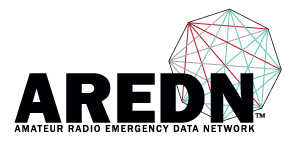I have access to Cisco switches with POE. Anyone using one to connect to your antennas? I was thinking I could use one of them to setup four antennas at my location? Also is there any use to adding 900mhz antenna to this setup?
thanks
KZ6TOD
Ubiquiti PowerBeam PBE-M5-400
thanks
KZ6TOD


Ed
Industry standards fall under PoE/PoE+, UPoE/UPoE+ defined by 802.3af/at. Devices are categorized by their class (based on watts). 48-53V is the most common voltage seen.
For the Ubiquiti and MikrTik devices we use, most are in the 24V range and seem to work "OK" on 13V. The power injectors send the voltage down the network cable, which should never be used on a non-poe device. I usually call this poe as the poor-man's poe because I have seen some injectors where you can inject on one side, and then remove it on the other end with adapters on both sides. This can be used to power a network switch or router without having to run a power cord. 10baseT and 100baseT only use pins 1,2,3, and 5. 1000baseT uses pins 1,2,3,4,5,6,7 and 8. When you take pins 4,5,7, and 8 for power, you are limited to 100baseT max.
801.2af/at get around this by their way to inject the power and remove the power on the other end. The Cisco smart switch will also get a "request" from the device connecting before it sends power down the ethernet cable. I am not sure how this request is made but I suspect it has to do with resisters or caps to tell the switch it can do 802.1af/at.
The Cisco smart switches with PoE are great and I use them for my cameras. Maybe there could be a device to transform the 48V down to 24V. If there are devices that can do this, I would be interested to know about them.
Edit: I forgot I purchased a poor-man's poe injector manifold. This allows me to power 8 devices from 1 power supply (I have used old 18-20V laptop power supplies that match the power input). While the power pins are connected together, the data pins are similar to a barrel connector (RJ45 plugs into both sides). Here is a non-affiliate link.
73,
Matt
I'll contribute a tiny bit that might be useful to someone. I am managing a site with a 8 port managed Ubiquity switch running multiple devices. Most are AREDN and get 24VDC from continuous POE as per usual. However, one device I wanted to run is a POE camera that wants 12VDC. I didn't want to run another power cable up the pole, just use the existing Cat5. So, I found that if you buy enough power injectors in sets, the can function both as power injectors AND as power extractors. I take the 24VDC from a port on LAN and before it gets to the camera, I extract the 24VDC by using an injector backwards. That gives me 24VDC out from the barrel adapter of the injector and then feed that to a small DC/DC conveter to drop to 12VDC. I then feed that back into the same model POE injector but in reverse wiring so the camera gets the pass thru ethernet and 12VDC like it wants over POE. I think I had to also add a simple ethernet coupler F/F to finish the job. Of course, there had to be a waterproof box large enough to hold all this at the camera mount as well as glands etc. It works just fine. I could have put the DC/DC converter in the box with the switch I guess and used a passive injector at the switch to inject 12VDC but there was some reason I wanted to do it the other way.
Ed
I bought 4 POE injector pairs that inject and extract POE.
1 of the pair of POEs has a male barrel power connector the other 1 of the pair is female.
I had several spare 12 vdc/1 amp power supplies.
Proof of concept:
On AREDN http://nc8q-cam1.local.mesh/cgi-bin/api.cgi?cmd=Snap&channel=0&rs=nc8q&u...
Just like the common AREDN devices, they are Passive POE.
The voltage can be anywhere from 0 to < 60 volts, I assume.
I hope this helps,
Chuck
Ed